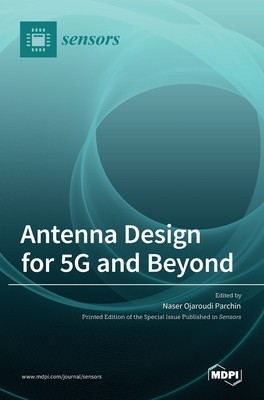
- We will send in 10–14 business days.
- Publisher: MDPI AG
- ISBN-10: 3036535314
- ISBN-13: 9783036535319
- Format: 17 x 24.4 x 2.4 cm, hardcover
- Language: English
- SAVE -10% with code: EXTRA
Antenna Design for 5G and Beyond (e-book) (used book) | bookbook.eu
Reviews
Description
With the rapid evolution of the wireless communications, fifth-generation (5G) communication has received much attention from both academia and industry, with many reported efforts and research outputs and significant improvements in different aspects, such as data rate speed and resolution, mobility, latency, etc. In some countries, the commercialization of 5G communication has already started as well as initial research of beyond technologies such as 6G.MIMO technology with multiple antennas is a promising technology to obtain the requirements of 5G/6G communications. It can significantly enhance the system capacity and resist multipath fading, and has become a hot spot in the field of wireless communications. This technology is a key component and probably the most established to truly reach the promised transfer data rates of future communication systems. In MIMO systems, multiple antennas are deployed at both the transmitter and receiver sides. The greater number of antennas can make the system more resistant to intentional jamming and interference. Massive MIMO with an especially high number of antennas can reduce energy consumption by targeting signals to individual users utilizing beamforming.Apart from sub-6 GHz frequency bands, 5G/6G devices are also expected to cover millimeter-wave (mmWave) and terahertz (THz) spectra. However, moving to higher bands will bring new challenges and will certainly require careful consideration of the antenna design for smart devices. Compact antennas arranged as conformal, planar, and linear arrays can be employed at different portions of base stations and user equipment to form phased arrays with high gain and directional radiation beams.
The objective of this Special Issue is to cover all aspects of antenna designs used in existing or future wireless communication systems. The aim is to highlight recent advances, current trends, and possible future developments of 5G/6G antennas.
EXTRA 10 % discount with code: EXTRA
The promotion ends in 10d.19:17:59
The discount code is valid when purchasing from 10 €. Discounts do not stack.
- Publisher: MDPI AG
- ISBN-10: 3036535314
- ISBN-13: 9783036535319
- Format: 17 x 24.4 x 2.4 cm, hardcover
- Language: English English
With the rapid evolution of the wireless communications, fifth-generation (5G) communication has received much attention from both academia and industry, with many reported efforts and research outputs and significant improvements in different aspects, such as data rate speed and resolution, mobility, latency, etc. In some countries, the commercialization of 5G communication has already started as well as initial research of beyond technologies such as 6G.MIMO technology with multiple antennas is a promising technology to obtain the requirements of 5G/6G communications. It can significantly enhance the system capacity and resist multipath fading, and has become a hot spot in the field of wireless communications. This technology is a key component and probably the most established to truly reach the promised transfer data rates of future communication systems. In MIMO systems, multiple antennas are deployed at both the transmitter and receiver sides. The greater number of antennas can make the system more resistant to intentional jamming and interference. Massive MIMO with an especially high number of antennas can reduce energy consumption by targeting signals to individual users utilizing beamforming.Apart from sub-6 GHz frequency bands, 5G/6G devices are also expected to cover millimeter-wave (mmWave) and terahertz (THz) spectra. However, moving to higher bands will bring new challenges and will certainly require careful consideration of the antenna design for smart devices. Compact antennas arranged as conformal, planar, and linear arrays can be employed at different portions of base stations and user equipment to form phased arrays with high gain and directional radiation beams.
The objective of this Special Issue is to cover all aspects of antenna designs used in existing or future wireless communication systems. The aim is to highlight recent advances, current trends, and possible future developments of 5G/6G antennas.


Reviews